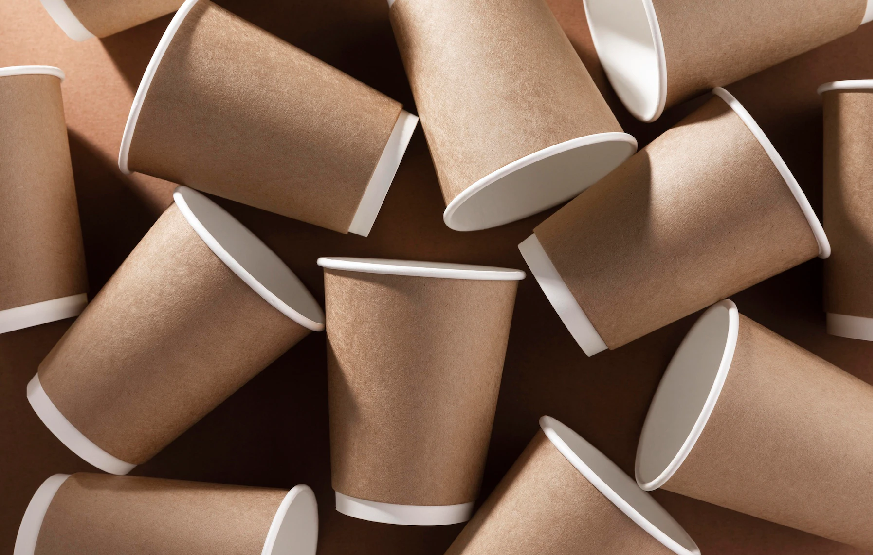In the food industry, items for food packaging are crucial. However, there are a lot of traditional food packaging materials that have negative environmental effects. A more sustainable option that can aid in trash reduction and the promotion of circularity is eco friendly paper cup. The environmental advantages of utilising eco-friendly paper cups will be discussed in this article, along with how they support more environmentally friendly methods of food packaging.
What are Paper Cups That Are Eco-Friendly?
Paper, sugarcane, and plant-based polymers are among the biodegradable and renewable resources used to make eco-friendly paper cups. Unlike conventional plastic or Styrofoam cups, they are made with a minimal environmental impact in mind at every stage of their lifecycle. Several salient features render paper cups environmentally sustainable, such as:
Use of paper that has been sustainably or recycled: Paper cups can be manufactured from paper that has been sustainably harvested or from paper that has been recycled. Deforestation is lessened as a result.
Biodegradable or recyclable: More environmentally friendly paper cups can be composted, and they will decompose in industrial composting facilities. It is still possible to recycle non-compostable paper cups into new paper goods.
Materials derived from plants: Rather than using plastics obtained from fossil fuels, some paper cups have plastic linings created from plants, such as sugarcane or other renewable feedstocks.
Minimal packaging: Paper cups that are environmentally friendly feature straightforward, recyclable packaging that contains recycled materials. It lessens the utilisation of excess material.
Eco-Friendly Paper Cups’ Benefits to the Environment
Eco-friendly paper cups offer several essential environmental advantages over traditional plastic or Styrofoam cups because they are made of recyclable, compostable, and renewable materials.
Minimised Litter and Waste: Since most traditional disposable cups are not recyclable or compostable, they frequently wind up as litter or in landfills. After their useful life, paper cups can be recycled into new items or composted, keeping materials out of the environment.
Reduced Deforestation and Water Use: Paper cups manufactured from recycled fibres or paper sourced sustainably lessen the need to clear forests to obtain raw materials. Additionally, their production requires less water than that of plastic.
Reducing Carbon Footprint: The manufacture, shipping, and disposal of plastic cups all result in considerable emissions of greenhouse gases. The production of paper cups and their end-of-life processing release less carbon dioxide into the atmosphere.
Decreased Toxins: When plastic cups burn or decompose over time in landfills, toxins may be released. Paper cups are free of chemicals and pollutants that could be harmful.
Part in Eco-Friendly Food Packaging
Styrofoam and disposable plastic have long been mainstays in the food service business catering to the on-the-go. A trend is emerging, meanwhile, toward packaging options that are more environmentally friendly. Because they offer a renewable and recyclable/compostable alternative, eco-friendly paper cups can be a significant part of this shift.
Among the ways that paper cups support environmentally friendly methods of food packaging are:
Biodegradable Service-Ware: After-use biodegradable paper cups, plates, and clamshell containers are becoming more common in coffee shops, cafeterias, and event caterers.
Packaging for Takeout: To cut down on trash, restaurants that offer takeout or delivery are switching to fiber-based items in place of paper cups and bags that are lined with plastic.
Conventional Packaging’s Issue
Traditional food packaging has serious environmental problems, especially with single-use plastic and styrofoam containers. These substances are infamous for not biodegrading, which makes them harmful to ecosystems and a source of pollution. The build-up of plastic debris in landfills and oceans has sparked worries about the long-term effects on the environment. Consequently, there is a greater demand than ever for environmentally responsible solutions.
Eco-Friendly Paper Cups’ Ascent
Paper cups that are beneficial to the environment have grown in popularity as a sustainable substitute for conventional packaging materials. Usually, renewable materials like paperboard—which comes from forests that are ethically managed—are used to make these cups. Paper cups reduce their environmental impact because they are compostable and biodegradable, unlike their plastic counterparts.
Advantages of Eco-Friendly Paper Cups for the Environment
Renewable materials:
Paperboard, the main component of environmentally friendly paper cups, comes from regenerating forests. Replanting of trees is guaranteed by ethical forestry methods, upholding a sustainable supply chain.
Decreased Carbon Emission:
Compared to the production of plastic or Styrofoam cups, the creation of paper cups often has a reduced carbon footprint. This is especially true when you consider the energy-intensive procedures used in the production of conventional packaging materials.
Recyclability:
A lot of environmentally friendly paper cups are made to be recycled. By recycling these cups, the production process has less overall environmental impact and less need for raw resources.
Promoting Paper Cups’ Circular Economy
While there are obvious sustainability benefits to using eco-friendly paper cups, optimising environmental benefits requires adequate end-of-life management. As for goals for sustainable food packaging products, they still require a functional circular economy infrastructure.
Customers and businesses can dispose of cups properly with the use of standardized labeling. Digital tools, educational initiatives, and on-pack labeling make it clear whether a particular cup is recyclable, compostable, or neither. It ensures appropriate sorting and guards against contamination.
Alongside conventional trash cans, public areas are adding more noticeable paper cup recycling boxes to increase recycling rates. Greater capacity recycling bins allow for the storage of heavier food service products. Additionally, some towns offer composting containers for “to-go” packing at events and parks.
Infrastructure for collection must reach a variety of end users. For instance, cup recycling is made possible on the go using portable recycling kiosks. Compostable packaging is collected alongside yard garbage by curbside services. Recycling at work increases business alternatives.
The intention is for food packaging and paper cups to either be continuously remanufactured as recycled content or to return to the natural cycle as compost through concerted efforts. The recovery of economic and environmental value from renewable resources is maximised in a circular system.
Paper cups will become even more essential as sustainable solutions develop and the food industry moves toward entirely recyclable and renewable packaging alternatives. Putting the circular economy first benefits both corporate expansion and environmental preservation.
Conclusion:
To sum up, environmentally friendly paper cups present a more viable option than food packaging made of plastic and Styrofoam. Maximising the environmental advantages, however, requires assuring appropriate end-of-life management through integrated circular systems. Innovations in cup design and recovery infrastructure will continue to progress the development of environmentally friendly packaging.

